Flat Roof Repairs: Quick Fixes vs. Long-Term Solutions
When your flat roof starts leaking, choosing the right repair approach makes all the difference. Quick fixes can stop immediate problems, but they rarely address the root cause. Long-term solutions require more investment up front but deliver years of reliable protection. This guide helps you understand when each approach makes sense and how to make the best decision for your property and budget.
Understanding Flat Roof Repair Options
Flat roof repairs fall into two main categories: temporary fixes that buy time and permanent solutions that restore structural integrity. Knowing the difference helps you allocate resources wisely and avoid repeating the same repair cycle every season.
A temporary patch might seal a leak for weeks or months, allowing you to plan for a complete solution during better weather or when funds become available. A permanent repair, by contrast, addresses underlying failures in the membrane, drainage, or substrate that caused the problem in the first place. Working with experienced flat roof roofers ensures you get honest guidance on which path fits your situation.
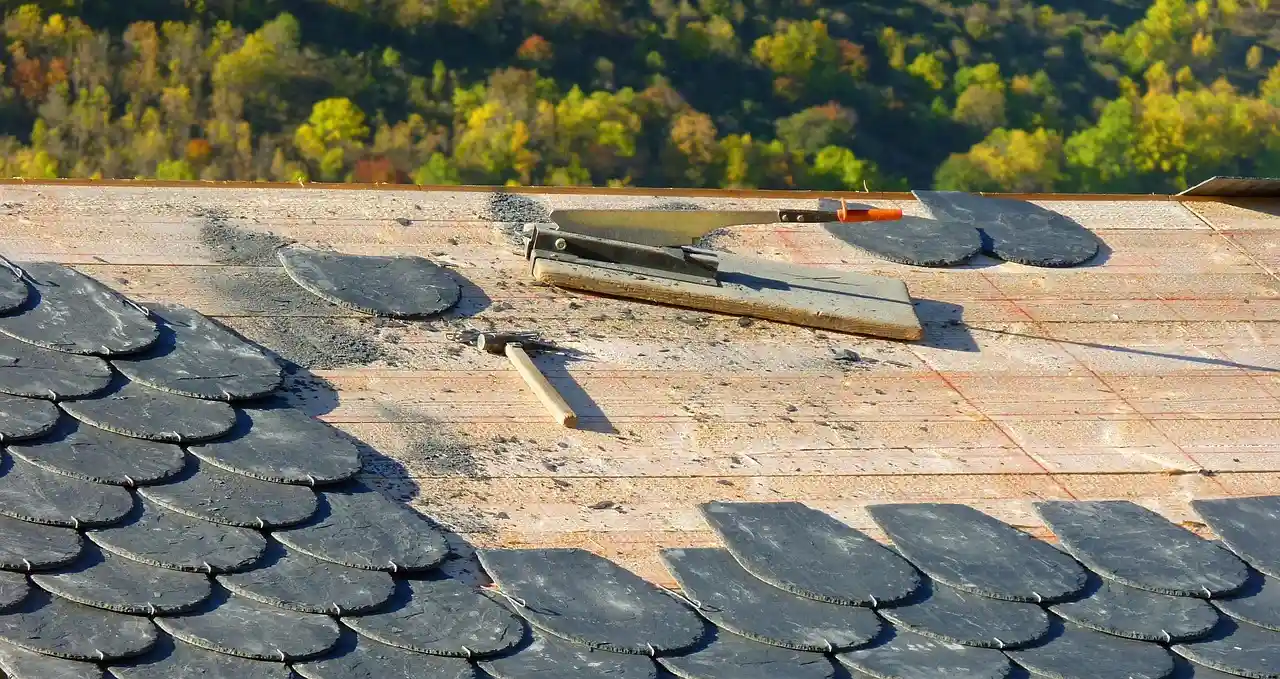
Quick Fixes: When Temporary Repairs Make Sense
Temporary repairs work well in specific circumstances. If a leak appears during winter when membrane adhesives won't bond properly, a quick fix prevents water damage until spring arrives. When budget constraints delay a full replacement, a targeted patch can protect the interior while you secure funding. Emergency situations during storms or freeze-thaw cycles often call for immediate action that holds until conditions improve.
Common temporary solutions include roofing tar or mastic applied directly over small cracks, peel-and-stick patches for isolated punctures, and temporary roof coatings that seal minor defects. These methods are inexpensive, fast, and require minimal disruption. However, they should always be viewed as interim measures rather than final answers. If you're unsure whether to attempt repairs yourself, read our guide on roofing repair specialists vs. DIY.
Long-Term Solutions: Investing in Permanent Repairs
Long-term flat roof repairs go beyond surface-level patches to address the system's underlying weaknesses. This might involve replacing deteriorated sections of the membrane, upgrading flashing details, improving drainage with tapered insulation, or reinforcing seams and edges with heat welding.
Permanent solutions cost more initially, but they eliminate recurring repair expenses and extend the roof's service life significantly. They also preserve manufacturer warranties, which often become void after multiple temporary patches. For properties in Reston, Herndon, and surrounding areas, investing in quality repairs protects against Northern Virginia's variable climate.
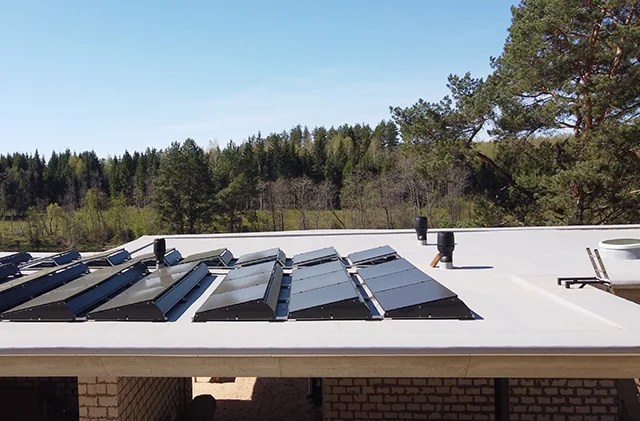
Recognizing When Quick Fixes Aren't Enough
Some problems cannot be solved with temporary patches. Widespread membrane deterioration, ponding water caused by structural sagging, failed seam welds across large areas, and damaged substrate layers all require comprehensive repairs. Repeated leaks in the same spot signal that the quick fix didn't address the real issue.
If you find yourself patching the same area more than once or twice, it's time to invest in a permanent solution. Professional roof repair services can assess the full extent of damage and recommend the most cost-effective path forward. A thorough inspection often reveals hidden issues that temporary measures cannot fix.
Comparing Costs: Short-Term vs. Long-Term Value
Quick fixes typically cost between $100 and $500, depending on the size and location of the repair. These patches may last a few months to a year. Long-term repairs range from $1,000 to several thousand dollars but can extend the roof's life by 5 to 15 years when done correctly.
When you calculate the total cost of repeated temporary repairs over several years, permanent solutions often prove more economical. They also reduce the risk of interior water damage, which can far exceed the cost of proper roofing work. For detailed pricing information, see our guide on roof replacement costs in Northern Virginia.
Material-Specific Repair Considerations
Each flat roof material requires tailored repair methods. TPO membranes benefit from heat-welded seams that create permanent bonds. EPDM rubber roofs rely on properly primed adhesive patches and seam tape. PVC systems demand skilled welding to maintain chemical resistance and seam integrity.
Modified bitumen repairs involve torch-applied or cold-applied layers, while built-up roofs may need hot tar and fabric reinforcement. Choosing the wrong repair method for your specific membrane type can cause more problems than it solves. Specialists in TPO roofing, EPDM systems, and PVC membranes ensure compatibility and longevity.
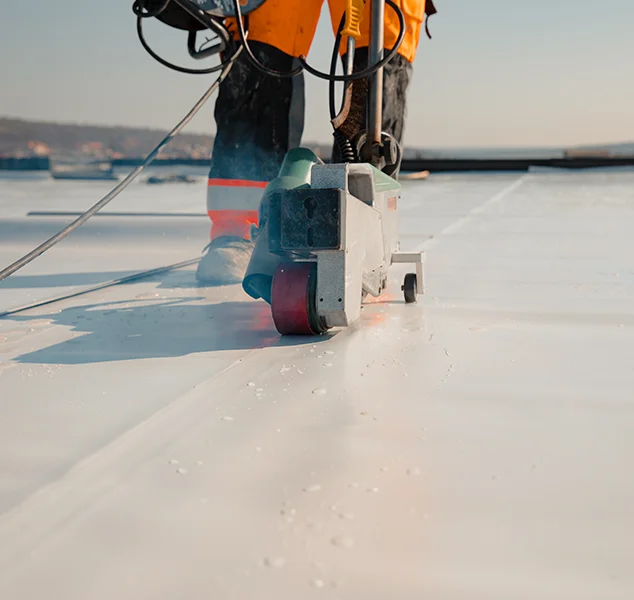
The Role of Drainage in Repair Success
Many flat roof failures stem from poor drainage rather than membrane defects. Standing water weakens seams, accelerates UV degradation, and creates constant moisture stress. Quick fixes applied to areas with drainage problems will fail repeatedly because the underlying cause remains unaddressed.
Long-term solutions often include drainage improvements: installing additional drains or scuppers, adding tapered insulation to create positive slope, clearing blocked drain lines, and repairing or replacing damaged crickets. These upgrades prevent future problems and make the entire roof system more reliable. A qualified flat roofing company will evaluate drainage as part of any repair assessment.
When to Repair vs. Replace Your Flat Roof
The decision between repair and replacement depends on the roof's age, extent of damage, and overall condition. If the membrane is less than 10 years old and damage is limited to isolated areas, targeted repairs make sense. When the roof approaches the end of its expected lifespan or shows widespread deterioration, replacement becomes the smarter investment.
Core samples can reveal hidden moisture in the insulation or decking, helping you understand the full scope of the problem. An experienced contractor will provide honest guidance about whether repair or replacement offers better long-term value. For properties throughout Sterling and the surrounding Northern Virginia area, making the right choice protects your investment and avoids unnecessary expenses.
Seasonal Timing for Flat Roof Repairs
Temperature and weather conditions directly affect repair quality. Most membrane adhesives and sealants require temperatures above 40°F to bond properly. Spring and fall offer ideal conditions in Northern Virginia, with moderate temperatures and lower precipitation.
Summer heat can make working conditions challenging but allows for excellent adhesive performance. Winter repairs should be reserved for emergencies, with the understanding that permanent work will likely be needed once temperatures rise. Planning repairs during favorable weather ensures better results and longer-lasting protection.
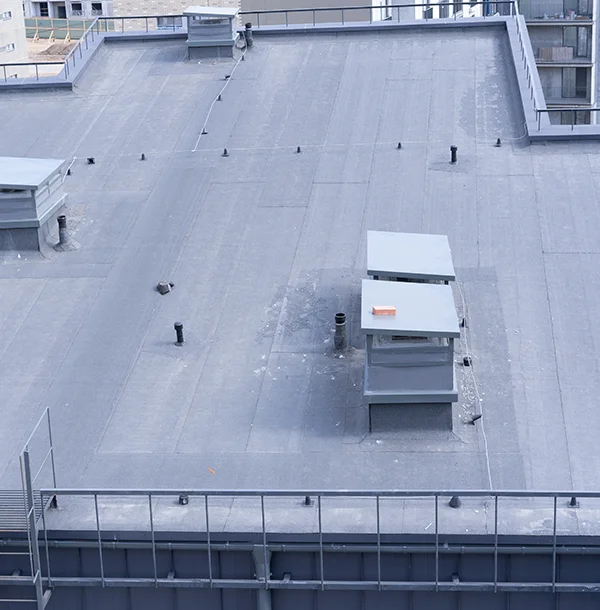
Preventive Maintenance: The Best Long-Term Strategy
Regular maintenance extends the life of any flat roof and reduces the need for both quick fixes and major repairs. Seasonal inspections identify small problems before they grow into costly failures. Cleaning drains and removing debris prevents ponding and clogs. Checking seams, flashing, and penetrations catches early signs of wear.
A structured maintenance plan costs far less than emergency repairs and helps preserve manufacturer warranties. Many property owners find that investing in preventive care every six months eliminates most unexpected roof problems. Learn more in our comprehensive roofing and repairs 101 guide and discover how to extend the lifespan of your roof.
Choosing the Right Contractor for Flat Roof Repairs
The quality of your repair depends heavily on contractor expertise. Look for companies with specific flat roof experience, manufacturer certifications, and a portfolio of successful repairs. Ask about their approach to diagnosing problems, what materials they recommend, and how they handle warranty coverage.
A reliable contractor will explain the difference between temporary and permanent solutions without pushing you toward unnecessary work. They should provide detailed written proposals, clear timelines, and references from similar projects. Working with trusted roofing contractors ensures you get honest assessments and quality workmanship.
Common Flat Roof Problems and Repair Approaches
Understanding common issues helps you communicate effectively with contractors and make informed decisions. Blistering occurs when moisture becomes trapped under the membrane, requiring removal and resealing. Ponding water needs drainage improvements rather than repeated patching. Seam failures demand heat welding or proper adhesive application, not just surface sealants.
Flashing leaks at walls, parapets, and penetrations require careful removal and replacement of failed components. Punctures from foot traffic or debris can often be patched successfully if the surrounding membrane is in good condition. A comprehensive inspection reveals which problems require quick fixes and which demand long-term solutions.
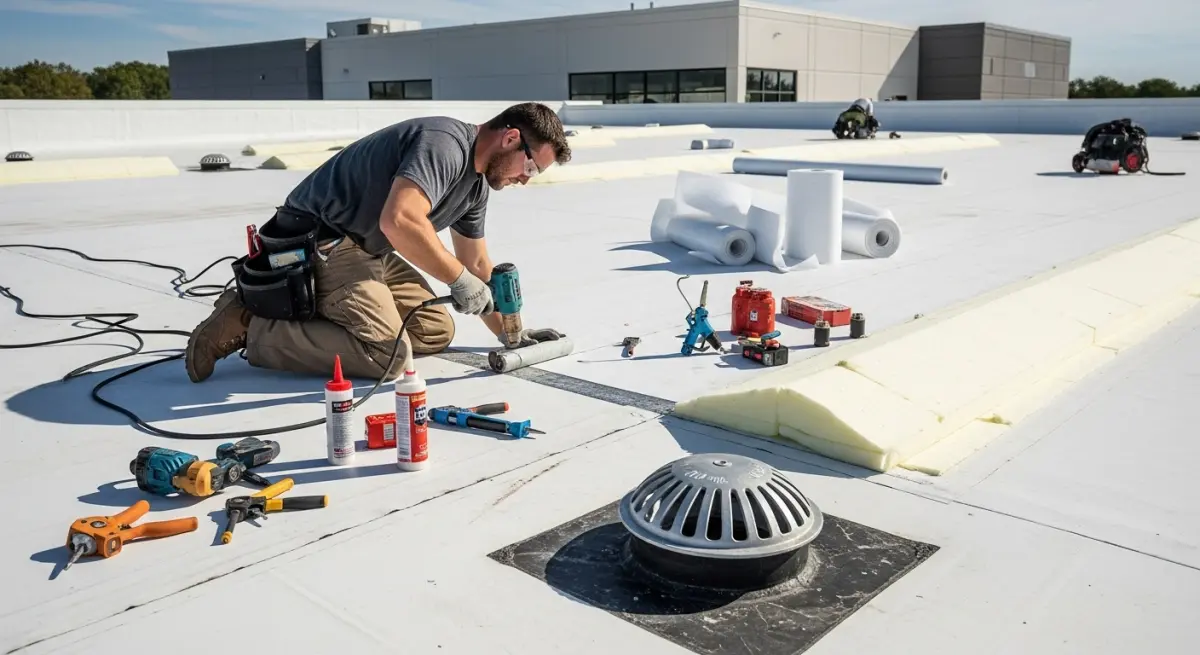
Trust Reston Roof for Expert Flat Roof Repairs
Reston Roof brings decades of flat roofing experience to every repair project. We assess each situation honestly, explain your options clearly, and deliver repairs that last. Whether you need an emergency patch or a comprehensive long-term solution, our team has the expertise and materials to protect your property.
We specialize in all flat roofing systems including TPO, EPDM, PVC, and modified bitumen. Our service area covers all of Northern Virginia, and we're ready to help you make the right repair decision for your building and budget. Contact Reston Roof today at (571) 453-6515 for a thorough flat roof inspection and honest repair recommendations.